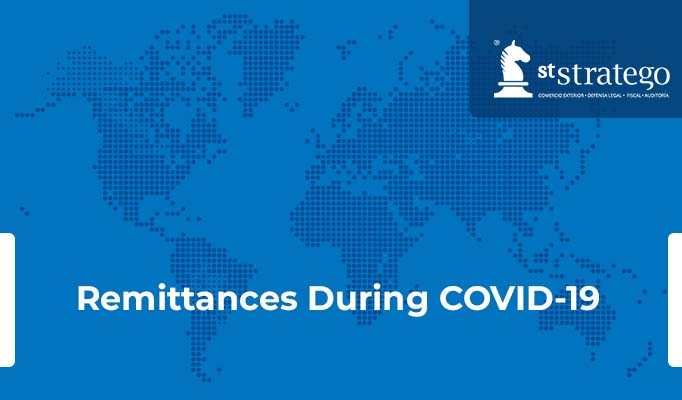Remittances are transfers sent by migrant workers from one country to another, usually to support their families left behind. Remittances are a common practice around the world, but their origins date back to ancient times.
Since ancient times, people have migrated in search of better opportunities. Historical records show that the Phoenicians, Greeks and Romans used financial transactions to transfer money to family and friends in other countries. However, it is only in modern times that remittances have become a global phenomenon.
During the 19th century, industrialization in Europe and North America created a great demand for workers in the mining, agricultural and construction sectors. These workers often left their families in their home countries and sent money to support them. At that time, the most common way to send money was through banks and exchange houses.
With the passage of time, the increase in the number of migrants and the ease of communication and transportation; remittances became more common and became an important economic driver for developing countries. In 2019, the World Bank reported that remittances sent globally reached $554 billion, with India, China and Mexico being the top remittance destinations. Remittances are an important source of income for many families and communities around the world. Remittances also have a positive impact on the economies of recipient countries, contributing to financial stability and the reduction of poverty.
It is undeniable that the country that sends the most money to other countries is the United States. According to World Bank data, in 2020, migrant workers and their families around the world received a total of $540 billion in remittances and of this amount, about 38% (about $205 billion) sent from the US.
The main recipients of remittances from the United States are Mexico, India, China, the Philippines and Vietnam. In 2020, Mexico received the largest amount of remittances sent from the United States, totaling $40.609 billion, followed by India with $83.102 billion and China with $60.727 billion.
It is important to note that the United States not only sends remittances to other countries, but also receives remittances from migrant workers who send money back to their families and communities in their home countries. According to the World Bank, in 2020, migrant workers living in the United States sent a total of $68 billion in remittances to their countries of origin. This is relevant because during the period of the pandemic, contrary to what was expected, remittance flows remained stable, with no major changes; the items in which some decreases were noted were donations; however, according to World Bank data, there was no real impact on the flow of remittances worldwide.
However, there are also problems with money transfers. For example, high transfer fees and fluctuating exchange rates can make it difficult for recipients to receive money. In addition, reliance on remittances as a source of income can lead to a lack of economic diversification and increased vulnerability to external disturbances. In conclusion, it should be noted that remittances have existed since ancient times and have become a global phenomenon in modern times. While it has a positive impact on the economies of recipient countries, it also poses challenges that need to be addressed in order to become a sustainable and efficient source of financial support for recipient communities.
REMITTANCES AROUND THE WORLD
-
- India: India received a total of $83.1 billion in remittances in 2020, down 0.2% from the previous year. Most remittances to India are made within the United States, United Arab Emirates, Saudi Arabia, Canada, and Australia.
- China: China received a total of $60.6 billion in remittances in 2020, up 2.6% from the previous year. Remittances to China are mainly from the United States, Hong Kong, Canada, Australia and the United Kingdom.
- Mexico: Mexico received a total of $42.9 billion in remittances in 2020, up 11.4% from the previous year. The majority of remittances to Mexico are sent from the United States.
- Philippines: The Philippines received a total of $34.9 billion in remittances in 2020, down 0.8% year over year. Most of the countries sending money to the Philippines are the United States, Canada, Saudi Arabia, Japan and the United Kingdom.
- Egypt: Egypt received a total of $29.6 billion in remittances in 2020, up 11.7% year over year. Most of the countries sending money to Egypt are the United States, Saudi Arabia, the United Arab Emirates, Kuwait and Qatar.
- Bangladesh: Bangladesh received a total of $22.7 billion in remittances in 2020, down 8.5% year over year. The majority of remittances to Bangladesh are from the United States, Saudi Arabia, the United Arab Emirates, Kuwait, and Qatar.
- Pakistan: Pakistan received a total of $21.9 billion in remittances in 2020, up 17.4% year over year. Most of the countries sending remittances to Pakistan are the United States, Saudi Arabia, United Arab Emirates, United Kingdom and Canada.
- Nigeria: Nigeria received a total of $17.2 billion in remittances in 2020, down 27.7% year over year. Most of the countries sending money to Nigeria are the United States, Italy, Canada, Spain and the United Kingdom.
- Vietnam: Vietnam received a total of $15.7 billion in remittances in 2020, up 6.7% year over year. The majority of remittances go to Vietnam.
En contraste, los países que reciben menos remesas son aquellos que tienen una economía pequeña, una población reducida y una baja tasa de emigración.
-
- San Marino: This small European country within Italy, with a population of about 34,000, has an underdeveloped economy and therefore receives very few remittances.
- North Korea: due to its isolation and closed political system, North Korea has very limited immigration and therefore does not receive large remittances.
- Turkmenistan: this Central Asian country has a closed and highly concentrated economy without a large floating population, so remittance flows are low.
- Eritrea: Due to the unstable political and economic situation, many Eritreans fled the country as refugees, but the number is small compared to other African countries and remittances received are minimal.
Some other countries in this situation are Andorra, Liechtenstein, Palau and Nauru. Although, it is important to keep in mind that these countries may not be comparable to other larger and more populated countries that receive fewer remittances in absolute terms, but in proportion to their economy and population, remittances can have a significant impact.
NEGATIVE EFFECTS OF REMITTANCES
While remittances can be an important source of income for many families and communities around the world, they can also have negative consequences. Some of the negative effects of remittances are:
-
- Economic Dependency: Remittances can create economic dependency in recipient households and communities, making it difficult to develop other sources of income.
- Impact on the local economy: Remittances can have a negative impact on the local economy, especially if they are used to finance consumption instead of investment. This generates inflation and reduces the competitiveness of the local productive sector.
- Talent drain: In some cases, remittances are sent to the most skilled and qualified workers in their home countries. This ” talent drain” can be detrimental to countries that lose their most talented and skilled workers.
- Social inequalities: in some contexts, remittances may contribute to social inequalities, as remittances may only benefit households with remittance members abroad, while those without such resources are left behind.
- Risk of financial exclusion: in some cases, remittances can exacerbate financial exclusion in recipient communities, as they can discourage investment in local financial services and the development of long-term financial capabilities.
- Risk of indebtedness: in some cases, households receiving remittances may fall into an indebtedness trap, as they may be tempted to borrow money to cover consumption expenses that they cannot afford with their normal income.
Undoubtedly, remittances have great benefits for the families receiving them, and even for the recipient economies, since they generate consumption, which in turn has a significant impact on other branches of the economy. However, as we have seen in the article, many countries are highly dependent on remittances and become co-participants by not discouraging migration, in many cases illegal migration of their citizens to other countries, and by not generating policies for economic growth and improvement of the working conditions of their inhabitants.
At Stratego, we stand out due to our extensive experience in providing comprehensive guidance to companies interested in investing in Mexico. Additionally, we have a specialized team in economic research that conducts information analysis to support decisions in economic matters, investments, and foreign trade. If you have inquiries or are seeking detailed information about our services, we encourage you to get in touch with us.
This document does not constitute a particular consultation, and therefore, Asesores Stratego SC, is not responsible for the interpretation or application given to it. The total or partial reproduction of this publication, by any means or procedure, is prohibited without the prior, express and written authorization of the author. Any form of unauthorized use will be prosecuted in accordance with the provisions of the Federal Copyright Law. We are at your service to answer your questions or comments, for more information on this subject and our services, please contact us at: info@stratego-st.com
or application given to it. The total or partial reproduction of this publication, by any means or procedure, is prohibited without the prior, express and written authorization of the author. Any form of unauthorized use will be prosecuted in accordance with the provisions of the Federal Copyright Law. We are at your service to answer your questions or comments, for more information on this subject and our services, please contact us at: info@stratego-st.com




